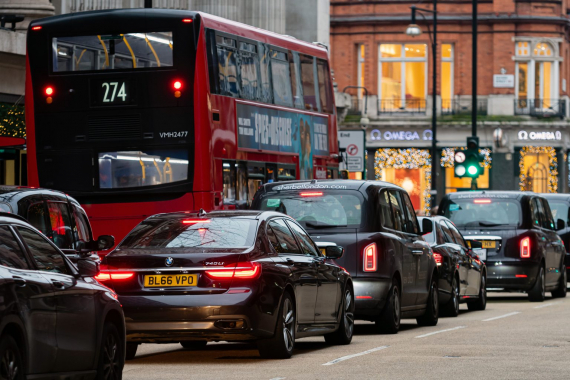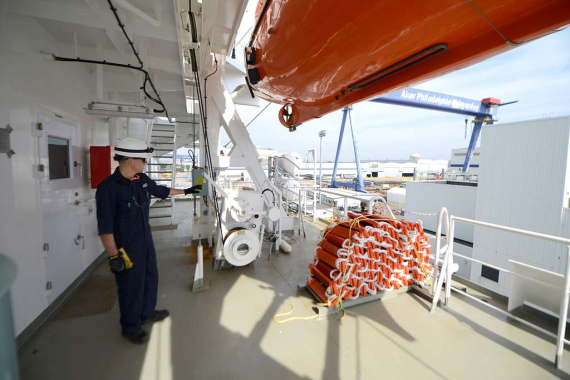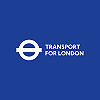
Despite efforts to encourage the use of active travel and public transport, the Mayor of London has revealed that congestion in the capital is costing the economy £5.1 billion a year.
The cost of traffic congestion to the capital has been revealed by the Mayor of London, Sadiq Khan, as he warns the public of the need to increase efforts to deliver a green, sustainable recovery from the pandemic in order to prevent London from moving from one public health and economy crisis to another.
Although more than a third of car trips made by Londoners could be walked in under 25 minutes and two thirds could be cycled in under 20 minutes, statistics show that traffic on London’s roads costs the economy £5.1 billion a year, which equates to £1,211 per driver. While car use remained high, trips by public transport in 2020 dropped by 14 per cent compared to 2019, offsetting a substantial increase of nine per cent witnessed in the share of trips made by walking or cycling in 2020.
Encouraging active travel
Throughout the pandemic, the Mayor and Transport for London (TfL) have implemented measures which have aided significant progress in active travel, working closely with boroughs to transform roads and ensure that there is enough space for people to walk and cycle safely. These measures are playing a vital role in reducing congestion by enabling people to travel while taking up less road space, including walking, cycling and public transport.
More than 120km of cycle routes and tens of thousands of square metres of extra pavement space have been delivered. Cycling during the pandemic increased by 22 per cent in outer London compared to spring 2019, with a seven per cent rise in inner London. Participation has also broadened, particularly among people from ethnic minority communities.
Early signs of a car-led recovery
Furthermore, public transport ridership increased by 95 per cent and is currently still significantly behind pre-pandemic levels, with buses at 70 per cent of normal demand and Tubes at 55 per cent. Car use has been more resilient than public transport and has been the fastest mode of transport to recover to near-normal levels of use after each lockdown, with data showing that it has been close in reaching pre-pandemic levels for much of the latter half of 2021.
Additionally, data from external providers shows that, as the number of vehicle miles increased, so has the time lost by drivers due to traffic. TomTom data shows that, in 2017, an average of 144 hours per year, per driver, were spent sitting in traffic – amounting to almost 20 minutes extra for a 30-minute trip during the evening rush hour. In 2018, this increased to 147 hours and, in 2019, to 149 hours per year. This equates to six days and five hours in total for an average London driver. In 2020, despite traffic reducing, Londoners still spent an extra 15 minutes per 30-minute trip driving because of congestion.
As well as the financial implications, this has also caused significant health impacts, including increased risk of respiratory diseases, and children growing up with stunted lungs. Pollution leads to 4,000 Londoners dying early each year, all of which increases the economic and resource burden on the health service.
A worrying trend
“Whilst we have made huge strides in increasing walking and cycling in London throughout the pandemic, car use has remained consistently high. If we do not double down on our efforts to deliver a greener, more sustainable future, we will replace one public health crisis with another – caused by filthy air and gridlocked roads,” said the Mayor of London, Sadiq Khan. “The cost to both Londoners and the capital cannot be underestimated, with days wasted stuck in traffic, billions lost to the economy and increased road danger and health impacts. Most traffic is caused simply by there being too great a demand for limited street space, meaning that the only long-term solution can be to significantly reduce car use in favour of greener means of travel,” he explained.
Since 2011, as London has grown in population, it has also experienced a huge increase in the number of miles driven on its roads – rising by 3.5 billion miles between 2011 and 2019, from 19.1 billion miles in 2011 to 22.6 billion miles by 2019. Despite the various COVID-19 lockdowns, a staggering 18.7 billion miles were still driven in 2020.
The overall active, efficient and sustainable mode share for travel in 2020 – which details the number of trips by walking, cycling and public transport – is estimated at 58.3 per cent compared to 63.2 per cent in 2019. This shows that the key metric that the Mayor is trying to increase as part of his Transport Strategy has reduced by five per cent over the pandemic, as a higher proportion of trips are now being driven. This reduction is a result of a 14 per cent drop in the share of trips made by public transport.
“Ensuring that people can walk, cycle and use public transport is vital to London’s successful recovery from the pandemic. A car led recovery will increase congestion and pollution, threatening London’s economy and making the capital a less healthy and sustainable place for everyone. Following the successful expansion of the ULEZ scheme, which led to a reduction in trips by older and dirtier vehicles, we’re determined to make sure that clean and reliable public transport plays a central role in supporting Londoners and the wider economy,” said Alex Williams, Transport for London’s Director of City Planning.
“Traffic congestion is bad for our health, bad for business and bad for the planet, so it is crucial that we keep up efforts to reduce car use in the capital to ensure a green recovery. Making more journeys by public transport and active travel is key to tackling congestion and cleaning up London’s air – as well as helping to reduce carbon emissions – so it is regrettable that the share of journeys by public transport in particular has decreased as a result of the pandemic,” said Silviya Barrett, Head of Policy and Research at Campaign for Better Transport. “We welcome the Mayor’s action on traffic reduction and decarbonisation so far and we hope that London continues to lead the way in introducing innovative measures to tackle congestion and reduce car use,” she added.
“Traffic congestion is bad news for London’s businesses and for Londoners’ health and, despite welcome interventions to encourage drivers to travel by other means, these latest figures suggest that more needs to be done. The Congestion Charge, while world-leading when it was first introduced, is outdated and its effectiveness has diminished over time, particularly as it only affects those who drive through our city centre,” said Nick Bowes, Chief Executive of Centre for London. “The Mayor needs to be bold and introduce a simpler, smarter and fairer system of road user charging which replaces both the Congestion Charge and the Ultra-Low Emission Zone. Such a scheme would tackle congestion, improve air quality and promote travel by public transport, walking and cycling by charging drivers by the mile. It could also play a key role in filling the hole in Transport for London’s budget.”






































